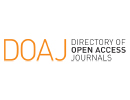Of war secrets and their revelations in post-conflict Peru. The other side of memory in the Andes
The other side of memory in the Andes
Abstract
This article analyzes the social production of silences and secrets related to the Peruvian internal armed conflict (1980-2000) and the modalities of its disclosures, as part of memory processes in the Ocros district, in the Quechua-speaking Andes of Ayacucho. To what extent do these secrets take us into the gray areas of war? And how does an understanding enable the avoidance of a certain simplistic Manichaeism surrounding fratricidal conflicts? Here, our aim is to understand the dialectic between what is hidden and what is revealed in public discourse, in order to be able to “historicize” the violence and understand the origins of certain atrocities. In this way, the goal is to achieve different levels of complexity regarding the role of peasants, beyond the testimonies expressed in the context of the Truth and Reconciliation Commission (2003), and the implementation of reparations policies that produced narratives which reflected a normative victimization discourse.
References
Aroni, R. (2020). Huamanquiquia: Indigenous Peasant Resistance against the Shining Path in Peru. [Tesis doctoral]. University of California Davis.
Berg, R. (1994). Peasants responses to Shining Path in Andahuaylas [1986-1987]. En: David Palmer (Ed.), Shining Path of Peru (pp. 101-122). St. Martin Press.
Bonilla, H. (1989). La defensa del espacio comunal como fuente de conflicto. San Juan de Ocros versus Pampas (Ayacucho), 1940-1970. Instituto de Estudios Peruanos.
Caro, R. (2021). Demonios encarnados. Izquierda, gremio y campesinado en los orígenes de la lucha armada en Huancavelica: 1963-1982. La Siniestra ediciones.
Cisneros, C. (2009). Los recursos legales y consuetudinarios en conflicto por tierras entre las comunidades de San Juan de Ocros y Pampas (1945-1970). [Tesis de bachillerato]. Universidad Nacional San Cristóbal de Huamanga.
Comisión de la Verdad y Reconciliación (CVR) (2003). Informe Final. Comisión de la Verdad y Reconciliación. Disponible en: https://www.cverdad.org.pe/ifinal/index.php.
Cóndor Alarcón, N. y Pereyra Chávez, N. E. (2015). Desaparecidos en la penumbra del atardecer: disputas privadas, memoria y conflicto armado interno en San Miguel (Ayacucho). Anthropologica, 33(34), 63-88.
Del Pino, P. (2017). En nombre del gobierno. El Perú y Uchuraccay: un siglo de política campesina. La Siniestra ensayos.
Del Pino, P. y Yezer, C. (2013). Las formas del recuerdo. Etnografías de la violencia política en el Perú. Instituto de Estudios Peruanos.
Delacroix, D. (2016). De larmes et de pierres. Mémorialisation et discours victimaire dans le Pérou d’après-guerre. Institut de Varenne.
Fassin, D. (2017 [2010]). La razón humanitaria. Una historia moral del tiempo presente. Marcial Pons.
González, O. (2011). Unveiling Secrets of War in the Peruvian Andes. University of Chicago Press.
Heilman, J. P. (2018). Rebeliones inconclusas. Ayacucho antes de Sendero Luminoso. La Siniestra ensayos.
Jamin, J. (1977). Les lois du silence. Essai sur la fonction sociale du secret. François Maspéro.
Kalyvas, S. (2001). La violencia en medio de la guerra civil: Esbozo de una teoría. Análisis político, (42), 3-25.
Kalyvas, S. (2010). La lógica de la violencia en la guerra civil. Akal.
Levi, P. (2005 [1986]). Los hundidos y los salvados. El Aleph.
Portelli, A. (1991). The Death of Luigi Trastulli and Other Stories. Form and Meaning in oral History. State University of New York Press.
Rénique, J. L. (2016). La batalla por Puno. Conflicto agrario y nación en los Andes peruanos. La Siniestra ensayos.
Ricceur, P. (2004 [2000]). La memoria, la historia, el olvido. Fondo de Cultura Económica.
Robin Azevedo, V. (2014). ¿Verdugo, héroe o víctima? Memorias de un rondero campesino ayacuchano (Perú). Bulletin de l'Institut français d'études andines, 43(2), 245-264.
Robin Azevedo, V. (2021). Los silencios de la guerra. Memoria y conflicto armado en Ayacucho-Perú. La Siniestra ensayos.
Taussig, M. (2010). Desfiguraciones. El secreto público y la labor de lo negativo. Fineo editorial.
Theidon, K. (2004). Entre prójimos. El conflicto armado y la política de la reconciliación en el Perú. Instituto de Estudios Peruanos.
Theidon, K. (2014). Intimate Enemies: Violence and Reconciliation in Peru. Pennsylvania University Press.
Ulfe, M. E. y Sabogal, X. (2021). Reparando mundos. Víctimas y Estado en los Andes peruanos. Pontificia Universidad Católica del Perú.
Zempléni, A. (1996). Savoir taire. Du secret et de l’intrusion ethnologique dans la vie des autres. Gradhiva, (20), 23-41.
Copyright (c) 2023 Valérie Robin Azevedo

This work is licensed under a Creative Commons Attribution 4.0 International License.








